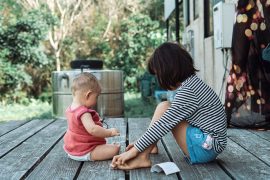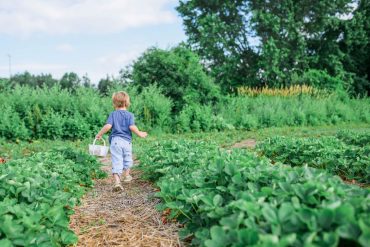Adult ideals
But why do I feel embarrassed when my kids struggle with sharing? As adults, we seem to have a lot vested in our children’s ability to share and take turns. And we ask a lot of them. We hope they might be able to share their favourite teddy, their treasured dump truck or their brand new train set. Yet in all truth, we ourselves might have some difficulty if our best friend asked if she could borrow our precious new leather handbag for the afternoon or our iPhone for the weekend.
So maybe, when I feel embarrassed about children’s’ sharing squabbles, it’s my adult eyes longing for some utopian ideal through my children where everything is shared freely. But as Shumaker points out, “keeping another toy when another child wants it is not the making of a selfish child, but simply a busy one…waiting for a turn teaches great lessons in delayed gratification…turn taking empowers kids and helps teach courtesy, awareness and spontaneous generosity.”
When a child has some control over giving another child a turn with a toy they are truly sharing. As adults we get quite confused around sharing, because “we mix up right to property (‘it’s mine!’) with the right to play (the child is busy)…But turn taking is not really about property at all. It’s about learning social awareness and protecting precious playtime.”
More Sharing Strategies
“What are we going to do here?”
From a very young age it endlessly impresses me how well children can solve problems around sharing themselves. Simply getting close and gently saying something like, “Mmm, this is a bit tricky: Tom wants to play with the doll and so does Abby. Can either of you figure out how we’re going to solve this?” Very often children are able to come up with their own solutions. Sometimes it helps if you offer a suggestion, “Could you take turns?” and even if your idea is rejected, it has a way of opening up other possibilities.
“It’s mine” game
Laughter is a powerful way of releasing emotional tension, and a good game of “its mine” can help children laugh deeply about sharing. How to play: make sure you have a good supply of small pillows or cushions. Lightly insist that one pillow is yours: “It’s mine! and I’m not going to share it!”, goofily huffing and puffing and cuddling a pillow tight. I have yet to find a child under the age of 10 that doesn’t find it really funny. Most will dive in and grab your pillow which is good place to have a tussle over the pillow following any laughs that come up.
Hand puppet squabbles
In a similar vein, another strategy is to play goofy games with soft toys or hand puppets (or simply your hand as a puppet).
Teddy, “This is my ball and no-one else can have it ever.”
Doll, “You can’t keep it all to yourself you have to share.”
Teddy, “Well I’m not going to so there!”
Any laughter or giggles that you get are powerful ways for children to relieve their lighter feelings around sharing. Often kids will ask you to play these games again and again, they intuitively know how helpful they are.
Things not for sharing
As adults we regularly don’t let our children use some of our possessions, maybe our phones or treasured jewelry. Asking a child to put away any toys that they don’t want to share before a play date can ease tensions.
Modeling sharing
Modeling is powerful. Pam Leo in her book Connected Parenting suggests having a box of toys that are “our” toys which we share with when other children come round to play.
Writing down whose turn is next
My local preschool uses lists to help children take turns. They write down the name of a child who wants a go at some activity and children can go off and play something else knowing that they’ll get called when it’s their turn. At home I write notes on Post Its as reminders. For example, both my kids like to collect the eggs from our chickens so we put a note up to remind us whose turn it is next time.
Rachel is a Member of the Australian Association of Family Therapists and runs The Connected Parent. She supports parents to build strong family relationships and compassionately navigate challenges. She lives in the beautiful Bega Valley, Australia where she’s regularly challenged and delighted by her own family. Join her Facebook group.










